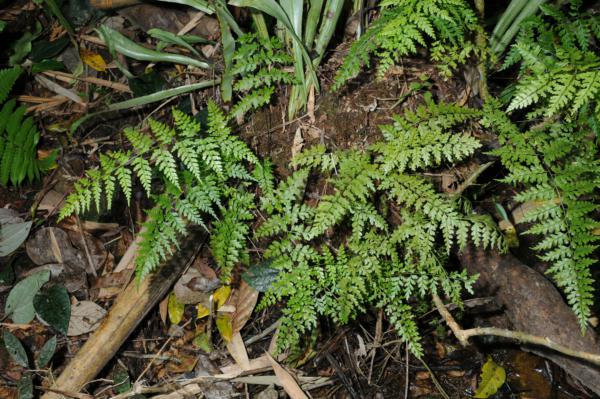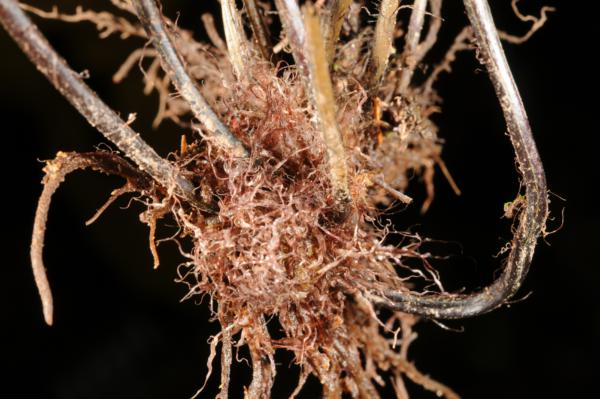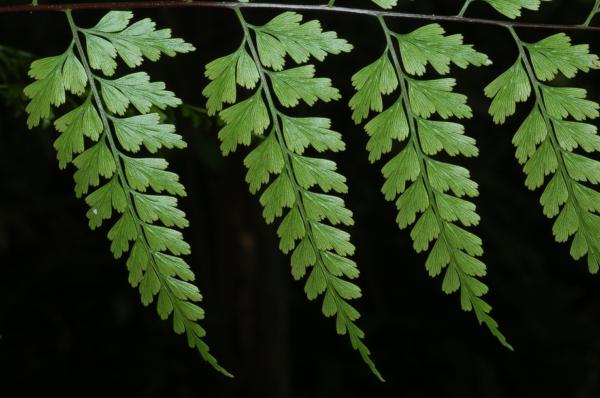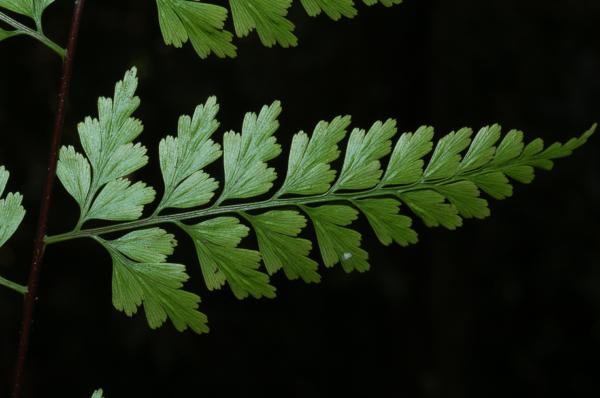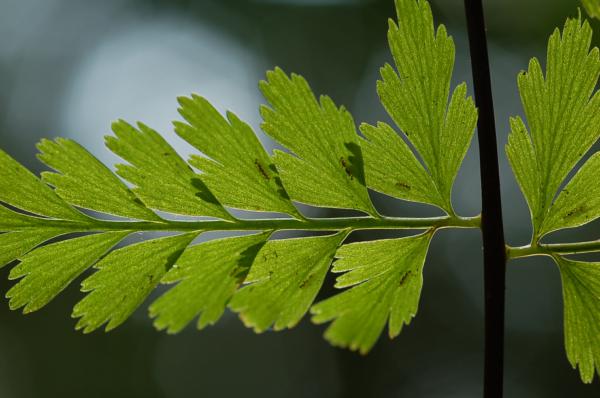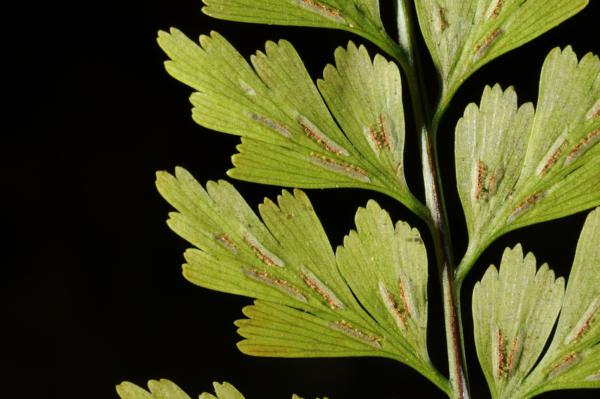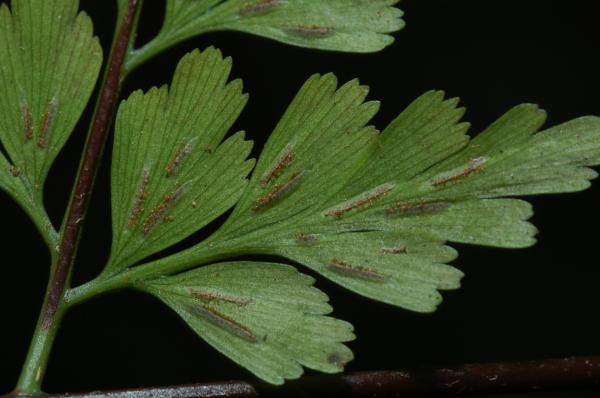
Asplenium confusum Tardieu & Ching
Family
Aspleniaceae
Nomenclature
Asplenium confusum Tardieu & Ching, Notul. Syst. (Paris) 5: 148, pl. 4, f. 3, pl. 7. 1936; Tardieu & C.Chr., Fl. Indo-Chine 7(2): 240. 1940; Tagawa & K.Iwats., SouthE. Asian Stud. 5: 88. 1967; Tagawa & K.Iwats., Fl. Thailand 3: 289. 1985; Boonkerd & Pollawatn, Pterid. Thailand: 139. 2000. – Type: Thorel s.n., Vietnam ("Cochinchine") (P).
Asplenium confusum var. angustipinnatum Ching & Tardieu, Notul. Syst. (Paris) 5: 150. 1936; Tardieu & C.Chr., Fl. Indo-Chine 7(2): 241. 1940.
Asplenium laserpitiifolium auct. non Lam.: Christ, Bot. Tidsskr. 24: 107. 1901; C.Chr., Bot. Tidsskr. 32: 346. 1916; E.Smith, J. Siam Soc. Nat. Hist. Suppl. 8: 4. 1929.
Description
Epiphytic. Rhizome short, ascending, densely scaly; scales narrow, gradually narrowing towards hair-pointed apex, 9–20 by 0.8 mm, entire, greyish to dark brown, crisped. Stipes 13.5–40 cm long, polished dark purple or nearly black, grooved above. Laminae elliptic to oblong-subtriangular, acuminate, 30–80 by 10–20 cm, tripinnate, 14–23 pairs of full-sized primary pinnae; rachis glabrous, grooved; lower pinnae 2–5 cm from the next ones, ascending, subtriangular, cuneate to subtruncate at base, gradually narrowing and bending up towards caudately acuminate apex, stalked, 10–16 by 3.5–6 cm; larger pinnules stalked, oblong-subtriangular, acute at apex, cuneate at base, pinnatifid to pinnate, up to 3 by 1.5 cm; ultimate segments (or secondary pinnules) spathulate, rounded and toothed at apex, cuneate and sessile at base, up to 10 by 5 mm, sometimes lobed to half-way, papyraceous to coriaceous; veins raised on both surfaces. Sori up to 7 mm long, usually nearly to midrib, close together but rarely confluent; indusia thin but firm, persistent .
Distribution in Thailand
NORTHERN: Tak, Phitsanulok; NORTH-EASTERN: Loei; EASTERN: Buri Ram; SOUTH-WESTERN: Phetchaburi, Prachuap Khiri Khan; SOUTH-EASTERN: Prachin Buri, Chon Buri, Chanthaburi, Trat; PENINSULAR: Chumphon, Surat Thani, Phangnga.
Distribution in Laos
Salavan
Distribution in Cambodia
Kompong Speu, Siem Reap
Wider Distribution
Indochina.
Ecology
On mossy tree-trunks or often on root mass of Asplenium nidus in dense evergreen forests at low to medium altitudes.
Proposed IUCN Conservation Assessment
Least Concern (LC). This species is widespread and not under any known threats.
Notes
More taxonomic work is required in this species . We have placed Asplenium confusum var. angustipinnatum Ching & Tardieu in synonymy although we have been unable to find the type specimen. The characters used to distinguish it are very variable in the species .
Voucher specimens - Thailand
Middleton et al. 4795, Phetchaburi, Kaeng Krachan National Park (E); Middleton et al. 5117, Loei, Phu Suan Sai National Park (E); Hennipman 3684, Loei, Phu Krading (P).
Voucher specimens - Laos
Poilane 16137, Salavan, Pou Set (P).
Voucher specimens - Cambodia
Pierre s.n., Kompong Speu, Khnang Krepeu (P); Godefroy 663, Siem Reap, Angkor (P).
Habit - plant was epiphytic and growing together with a Microsorum but has fallen from tree
Rhizome
Pinnae
Upper surface of lamina
Venation
Sori
Sori
Site hosted by the Royal Botanic Garden Edinburgh. Content managed by Stuart Lindsay, Gardens by the Bay, Singapore and David Middleton, Singapore Botanic Gardens. Last updated 24 January 2012
